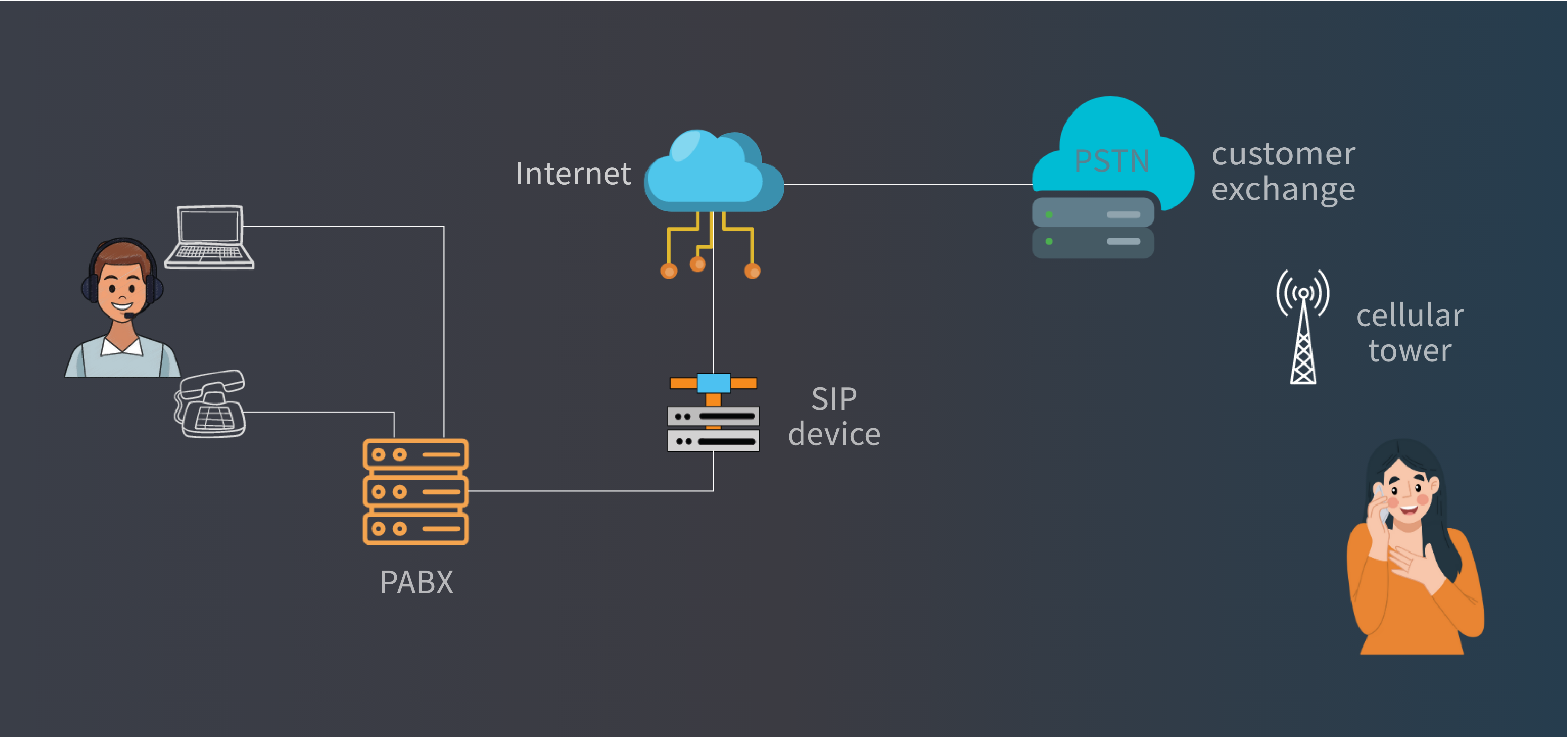The Journey of an Outbound Call: From Call Center to Customer
 Caleb Nyachwaya
Caleb Nyachwaya
Ever wondered what’s cooking behind the scenes when a call center agent reaches out to a customer? Well, you're not alone. As a technical support specialist for call center agents, I've been hit with this question more times than I can count. To address this, I've put together a comprehensive breakdown of the entire process. So, the next time someone asks me, I can confidently direct them to this article. Let's jump right in!
Understanding the Call Flow
Let's start with the basics of how communication takes place between a call center agent and a customer. This interaction involves various technologies and protocols, with one key player being SIP (Session Initiation Protocol).
SIP serves as the bridge for real-time sessions, such as voice, video, and messaging. In a call center setting, SIP facilitates communication between agents and customers, as well as among agents within the organization. Here's a simplified walkthrough:

Agent Initiates the Call
A call center agent uses a phone or software application (softphone), such as Avaya, X-lite, or Cisco Jabber, to place a call to the customer. The IP phone or softphone relays this call initiation to the PABX server.
PABX Server
This server plays a crucial role in routing the call to its intended recipient.
Think of the PABX server as the mastermind behind call management within the organization. It oversees call routing, queuing, and managing IP phone features. Depending on the setup, the PABX server could be on-site or hosted remotely.
From the PABX server, the call travels via a SIP trunk.
SIP Trunking
SIP trunk is like the bridge that connects the call center's phone system to the rest of the world, allowing the call center to communicate with customers and other external parties efficiently and effectively.
This virtual communication channel utilizes SIP to transmit voice, video, and data between the call center and external parties.The SIP trunk is not physically located at the call center. Instead, it is typically provided by an Internet Telephony Service Provider (ITSP) or a third-party vendor that specializes in providing SIP trunking services.
Customer Exchange
The SIP trunk routes the call to the customer's telephone exchange, typically operated by a local phone company or a VoIP service provider like Airtel.
The customer's telephone exchange directs the call to the customer's number or extension. This involves looking up the customer's details in a directory or using predefined routing.
Customer receives the call
The customer's phone rings, signaling an incoming call. The customer can answer using their phone handset, softphone app, or other devices.
Once the call is answered, both parties communicate using their respective devices. The audio travels through the exchange and SIP trunk, with the PABX server acting as the intermediary.
Trends
The call center world isn't immune to evolution, you know. In recent years, cloud-based PABX solutions have gained traction. These solutions allow organizations to outsource phone system management, offering benefits like reduced costs and increased scalability. When selecting a PABX service, keep in mind that technology constantly evolves, so research and align your choice with your business needs.
As we delve deeper into SIP trunk configuration in the next article, you'll gain a more comprehensive understanding of how the technical details come together. Stay tuned!
Subscribe to my newsletter
Read articles from Caleb Nyachwaya directly inside your inbox. Subscribe to the newsletter, and don't miss out.
Written by
